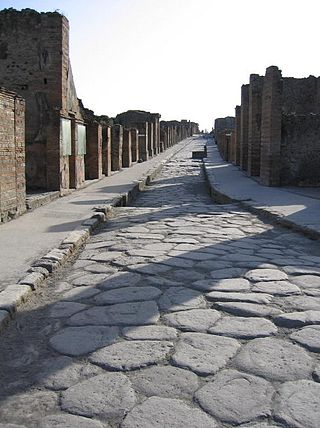
A sidewalk, pavement, footpath in Australia, India, New Zealand and Ireland, or footway, is a path along the side of a road. Usually constructed of concrete, pavers, brick, stone, or asphalt, it is designed for pedestrians. A sidewalk is normally higher than the roadway, and separated from it by a kerb. There may also be a planted strip between the sidewalk and the roadway and between the roadway and the adjacent land.

A trail, also known as a path or track, is an unpaved lane or small road usually passing through a natural area. In the United Kingdom and the Republic of Ireland, a path or footpath is the preferred term for a pedestrian or hiking trail. The term is also applied in North America to routes along rivers, and sometimes to highways. In the US, the term was historically used for a route into or through wild territory used by explorers and migrants. In the United States, "trace" is a synonym for trail, as in Natchez Trace.

A pedestrian is a person traveling on foot, whether walking or running. In modern times, the term usually refers to someone walking on a road or pavement, but this was not the case historically.

An alley or alleyway is a narrow lane, path, or passageway, often reserved for pedestrians, which usually runs between, behind, or within buildings in the older parts of towns and cities. It is also a rear access or service road, or a path, walk, or avenue in a park or garden.

Since the start of the twentieth century, the role of cars has become highly important, though controversial. They are used throughout the world and have become the most popular mode of transport in many of the more developed countries. In developing countries, the effects of the car on society are not as visible, however they are nonetheless significant. The development of the car built upon the transport sector first started by railways. This has introduced sweeping changes in employment patterns, social interactions, infrastructure and the distribution of goods.

A footpath is a type of thoroughfare that is intended for use only by pedestrians and not other forms of traffic such as motorized vehicles, bicycles and horses. They can be found in a wide variety of places, from the centre of cities, to farmland, to mountain ridges. Urban footpaths are usually paved, may have steps, and can be called alleys, lanes, steps, etc.

Pedestrian zones are areas of a city or town reserved for pedestrian-only use and in which most or all automobile traffic is prohibited. Converting a street or an area to pedestrian-only use is called pedestrianisation.
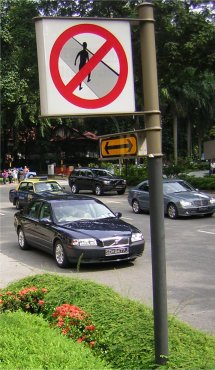
Jaywalking is the act of pedestrians walking in or crossing a roadway that has traffic if that act contravenes traffic regulations. The term originated in the United States as a derivation of the phrase jay-drivers, people who drove horse-drawn carriages and automobiles on the wrong side of the road, before taking its current meaning. Jaywalking was coined as the automobile arrived in the street in the context of the conflict between pedestrian and automobiles, more specifically the nascent automobile industry.

The car-free movement is a broad, informal, emergent network of individuals and organizations, including social activists, urban planners, transportation engineers, environmentalists and others, brought together by a shared belief that large and/or high-speed motorized vehicles are too dominant in most modern cities. The goal of the movement is to create places where motorized vehicle use is greatly reduced or eliminated, by converting road and parking space to other public uses and rebuilding compact urban environments where most destinations are within easy reach by other means, including walking, cycling, public transport, personal transporters, and mobility as a service.
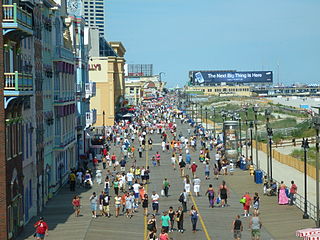
An esplanade or promenade is a long, open, level area, usually next to a river or large body of water, where people may walk. The historical definition of esplanade was a large, open, level area outside fortress or city walls to provide clear fields of fire for the fortress's guns. In modern usage, the space allows the area to be paved as a pedestrian walk; esplanades are often on sea fronts and allow walking whatever the state of the tide, without having to walk on the beach.
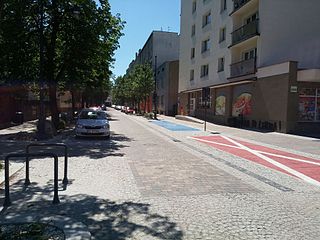
A living street is a street designed with the interests of pedestrians and cyclists in mind by providing enriching and experiential spaces. Living streets also act as social spaces, allowing children to play and encouraging social interactions on a human scale, safely and legally. Living streets consider all pedestrians granting equal access to elders and those who are disabled. These roads are still available for use by motor vehicles; however, their design aims to reduce both the speed and dominance of motorized transport. The reduction of motor vehicle dominance creates more opportunities for public transportation. Living Streets achieve these strategies by implementing the shared space approach. Reducing demarcations between vehicle traffic and pedestrians create a cohesive space without segregating different modes of transportation. Vehicle parking may also be restricted to designated bays. These street design principles first became popularized in the Netherlands during the 1970s, and the Dutch word woonerf is often used as a synonym for living street.
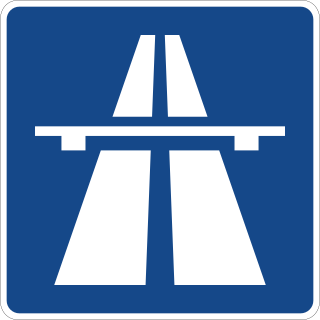
The Autobahn is the federal controlled-access highway system in Germany. The official German term is Bundesautobahn, which translates as 'federal motorway'. The literal meaning of the word Bundesautobahn is 'Federal Auto(mobile) Track'.

Living Streets is the United Kingdom charity for everyday walking. It was founded in 1929 as the Pedestrians' Association and became known as the Pedestrians' Association for Road Safety in 1952. The current name was adopted in 2001. It is a voting member of the International Federation of Pedestrians.

In urban planning, walkability is the accessibility of amenities by foot. It is based on the idea that urban spaces should be more than just transport corridors designed for maximum vehicle throughput. Instead, it should be relatively complete livable spaces that serve a variety of uses, users, and transportation modes and reduce the need for cars for travel.

Hawkers in Kolkata numbering 275,000 generated business worth ₹ 87.72 billion in 2005. In Kolkata, formerly known as Calcutta, in the Indian state of West Bengal, almost 80 per cent of the pavements are encroached by hawkers and illegal settlers. In many countries, hawkers use pavements or other public places to retail their goods or services but in Kolkata the magnitude has drawn special attention of administrators and law courts.
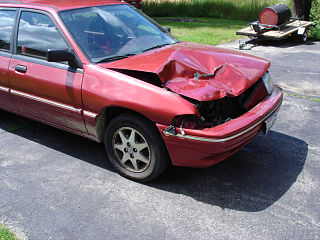
Road traffic collisions generally fall into one of five common types:
Montreal is a city located in Quebec, Canada and is one of the transportation hubs for eastern Canada and most of Quebec, with well-developed air, road, rail, and maritime links to the rest of Canada, as well as the United States and the rest of the world.
Rebar Art and Design Studio, stylized as REBAR, is an interdisciplinary studio founded in 2004 and based in San Francisco, United States, operating at the intersection of art, design.and activism. The group's work encompasses visual and conceptual public art, landscape design, urban intervention, temporary performance installation, digital media and print design. Rebar's projects often intersect with contemporary urban ecology, new urbanism, and psychogeography practices and theory.

Safety hazards have been noted due to pedestrians walking slowly and without attention to their surroundings because they are focused upon their smartphones. Texting pedestrians may trip over curbs, walk out in front of cars and bump into other walkers. The field of vision of a smartphone user is estimated to be just 5% of a normal pedestrian's.

A personal transporter is any of a class of compact, mostly recent, motorised micromobility vehicle for transporting an individual at speeds that do not normally exceed 25 km/h (16 mph). They include electric skateboards, kick scooters, self-balancing unicycles and Segways, as well as gasoline-fueled motorised scooters or skateboards, typically using two-stroke engines of less than 49 cc (3.0 cu in) displacement. Many newer versions use recent advances in vehicle battery and motor-control technologies. They are growing in popularity, and legislators are in the process of determining how these devices should be classified, regulated and accommodated during a period of rapid innovation.


















